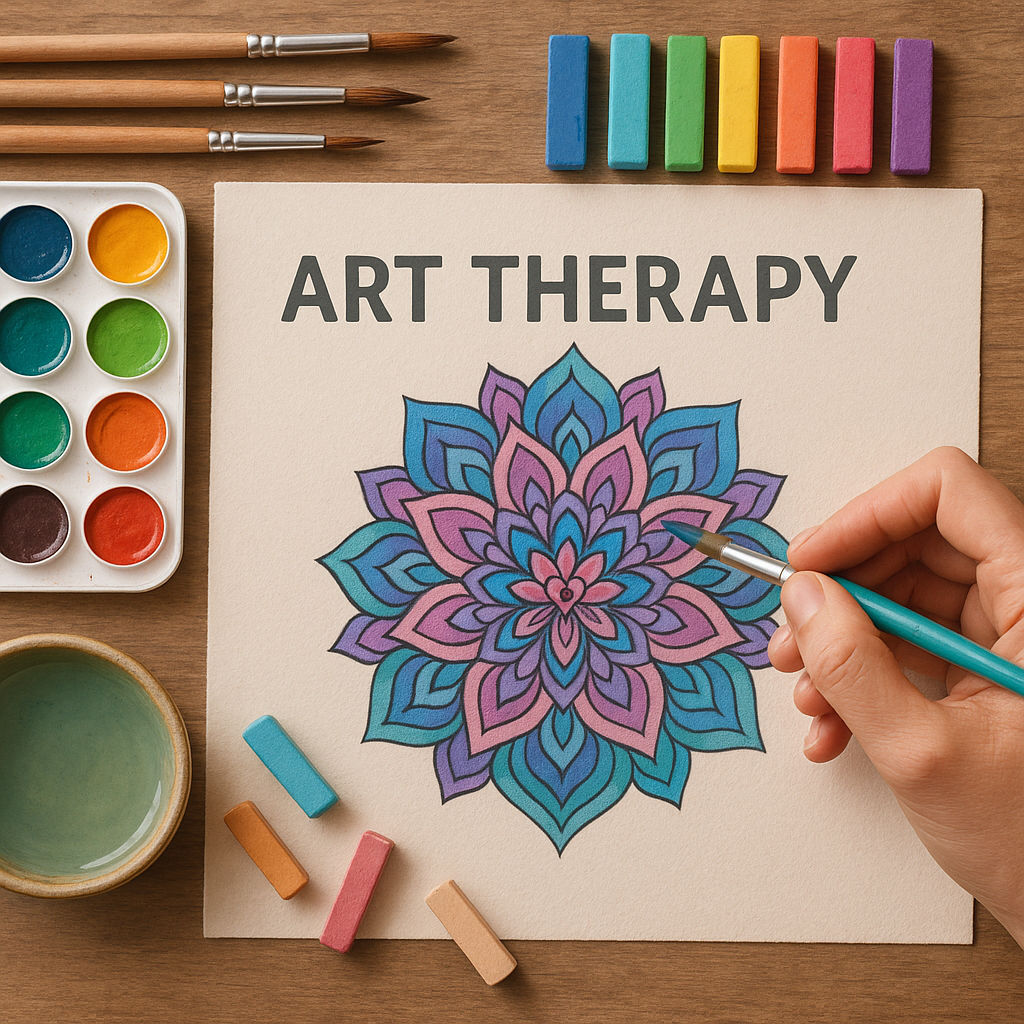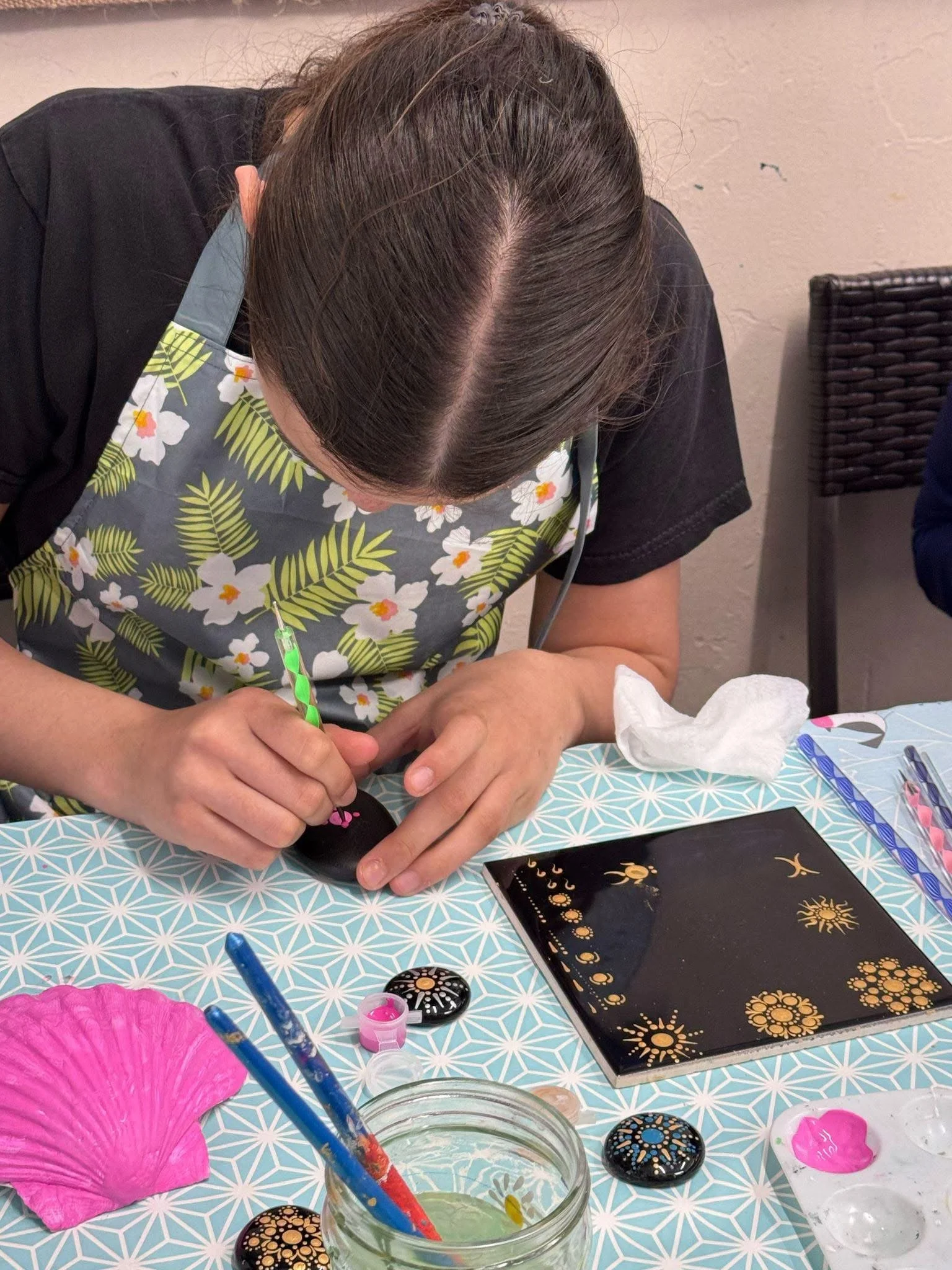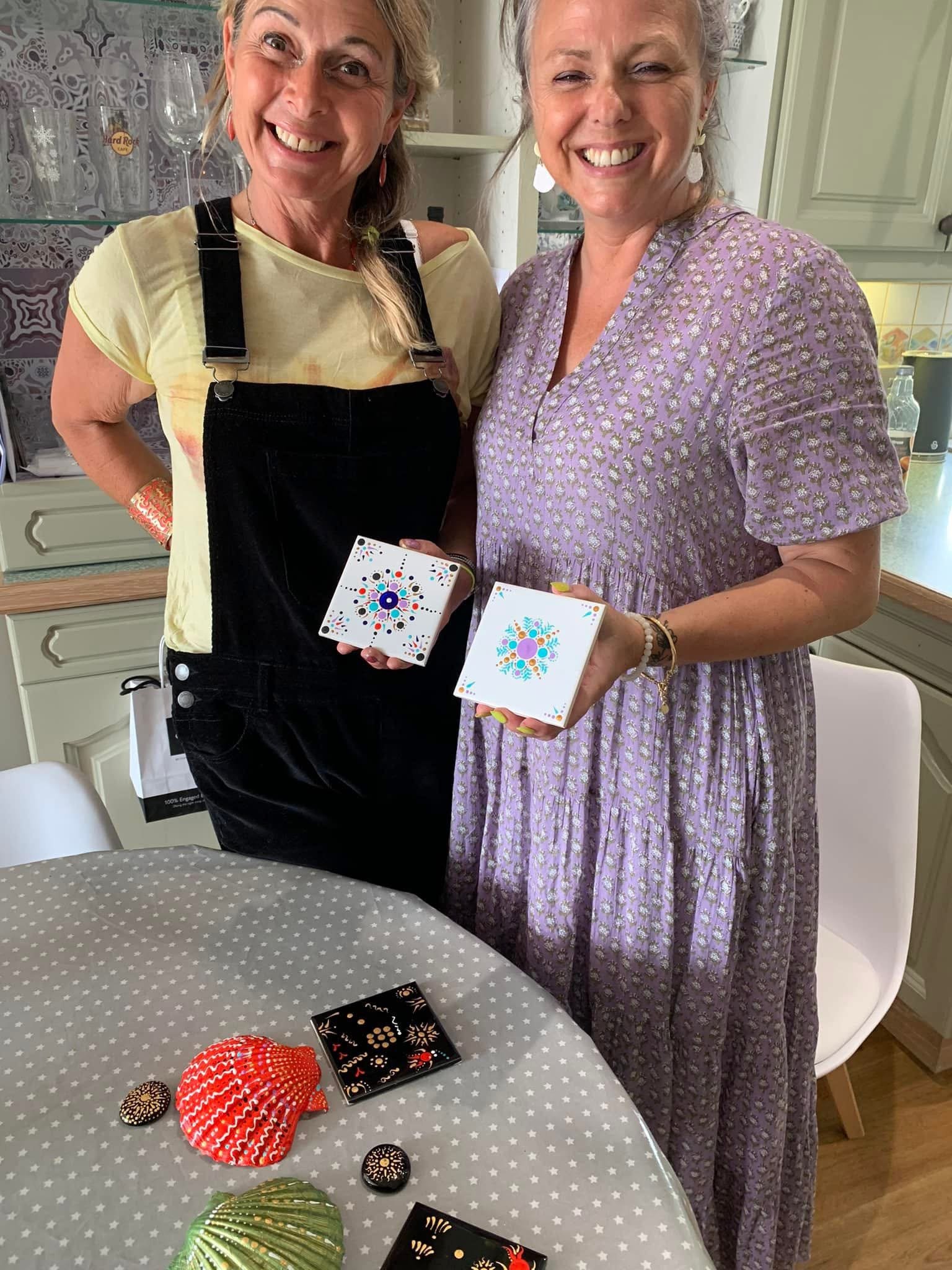Art Therapy – Is It a Thing? Does It Work?
Art Therapy
A personal view by Jo Logue
I’ve always loved painting. I find it calming and relaxing, it focuses my mind and gently takes me away from the worries of the day. For years it was just something I enjoyed personally, and it wasn’t until I opened my shop and started teaching that I really began to wonder whether it could help others too.
It’s not always easy to quantify whether art therapy “works.” But after five years of running creative workshops and observing hundreds of students, I’ve come to believe that almost everyone can benefit from the simple joy of creating.
A Typical Workshop Painting Scallop Shells and Pebbles
The sessions often follow a familiar pattern. Students arrive full of chatter and curiosity, donning aprons and settling around the workshop table. They begin by choosing their favourite shades from a table full of bright, cheerful paints. Using soft, wide brushes, they apply the first coat to a scallop shell , slowly, methodically. This part of the process seems to naturally quiet the room and create a calm, focused atmosphere.
I then teach dotting and various painting techniques forming patterns on black ceramic tiles. This is where the concentration deepens. Although I demonstrate the same steps each time, no two ever look alike. l like that beautiful individuality always shines through.
Then comes my favourite part: the freedom stage. Students decorate their shells and pebbles however they like, using the techniques they’ve just learned. Some ask for a little guidance, but most become completely immersed in their own creative flow and often, the room falls completely silent. That silence is special. To me, it’s a sign that everyone is fully in the moment. I think this is art therapy at its very best: creativity, calm, and connection.
A student deep in concentration…
A Defining Moment
One workshop that really stayed with me was for the Brain Tumour Charity. I was invited to run a session for the “Buddies”- a group of individuals and carers connected by shared experience. We painted ceramic tiles together, and at first, many of the attendees were hesitant. Some said they weren’t artistic or wouldn’t be able to take part. But with gentle encouragement, colourful paints, and a relaxed, welcoming environment, everyone joined in, in their own way, at their own pace.
What unfolded was magical. The room filled with smiles, conversation, and creative energy. By the end, every tile was painted, and many of the Buddies were proud to have tried something they thought they couldn’t do. One piece of feedback I received summed it up beautifully:
“MANY MANY THANKS for a great morning. The Buddies certainly enjoyed it — even the ones who said they weren’t artistic and didn’t want to paint a tile! Jo, your enthusiasm for what you were doing was tremendous. It filled the room and encouraged everyone.”
What the Research Says
While my perspective is based on personal experience, there is also growing research that supports the therapeutic value of art. Studies in the field of art therapy suggest that engaging in creative activity can help reduce stress and anxiety, support emotional expression, and improve overall wellbeing. It’s not about being “good” at art , it’s about the process itself: the rhythm of brush on canvas (or shell!), the colours, the freedom to create something personal.
Even short periods of art-making have been linked to measurable benefits, from lowered cortisol levels to improved mood. In clinical settings, art therapy is used with people managing grief, trauma, illness, and mental health challenges. But you don’t need a formal diagnosis to experience the positive effects. Sometimes, a quiet moment with a paintbrush or colouring pencils is enough.
A smile says it all..
My Conclusion
After years of teaching, I believe that anyone can create art and that most people who give it a go benefit from it. Whether it’s a workshop in my art shop, a session with a local charity, or simply painting at the kitchen table, art has the power to soothe, uplift, and connect us.
And that, to me, is what art therapy is all about.


